FR / EN
visitor's itinerary
The “Real” d’Artagnan
The historic d’Artagnan, the one portrayed by Courtilz de Sandras and the one by Dumas who took inspiration from it have many common elements: all three Gascon cadets, going to Paris to «go into active service», becoming brave and loyal musketeers. Charles Ogier de Batz was born in 1612 at Castelmore near Lupiac in Gascony. Around 1633, he joined the company of musketeers, taking his mother’s name, d’Artagnan, and the title of count. In 1646, the musketeers were disbanded and d’Artagnan went into Mazarin’s service among his «gentlemen-in-waiting». His loyalty to the minister and to the king during the Fronde earned him some difficult missions, which were proof of his tact and his humanity, as well as some rewards, such as the post of captain of the King’s little deer-hunting dogs. When the musketeers were formed again in 1667, he became a lieutenant, then captain-lieutenant of the first company. Field Marshall in 1672, he was killed at the Siege of Maastricht the following year.
-
Gatien Courtilz de Sandras
1/8 GWhile writing the The Three Musketeers, Dumas was largely inspired by the semi- fictionalized memoirs of D'Artagnan written by Courtilz Gatien de Sandras. 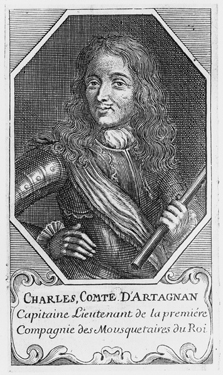
Gatien Courtilz de Sandras. Mémoires de Mr. d’Artagnan.
Chez Pierre Marteau, Cologne, 1701-1702.
Private Collection -
The Triumphant entry into the city of Paris of Their Majesties on Thursday, August 26, 1660.
2/8 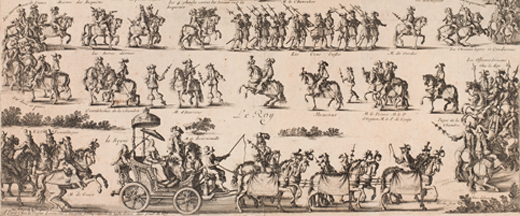
Nicolas Cochin (Engraver, 1610-1686).
Marche à l’entrée de leurs Majestez en la ville de Paris.
Fragment of an almanac, Paris, c. 1661.
Paris, musée de l’Armée. Inv. 996.27Following the Treaty of the Pyrenees signed on November 7, 1659, the mariage, arranged between Louis XIV and Maria Theresa of Spain, took place on June 9, 1660. The Musketeers, commanded by d’Artagnan recently promoted to the rank of second lieutenant, witnessed the grandiose ceremonies as they escorted the young royal couple during their solemn entry into Paris on Thursday, August 26, 1660. -
Correspondence between Louvois and d'Artagnan
3/8 Letters written between the Marquis de Louvois, French Secretary of State for War and D'Artagnan who was appointed governor of the region of Lille between April and December 1672. 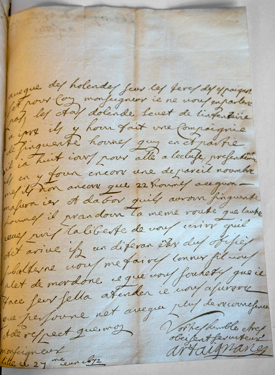
Correspondence between Louvois and d'Artagnan, Governor of Lille.
Collection of letters: April-December 1672.
Vincennes, Service Historique de la Défense. Inv. A1 278 -
Louis XIV crushes the Fronde
4/8 This small statue is a reduced model of the statue commissioned by the aldermen of the city of Paris and erected on June 23, 1654 in the courtyard of the Hotel de Ville of Paris and which is presently kept in the musée Condé in Chantilly. 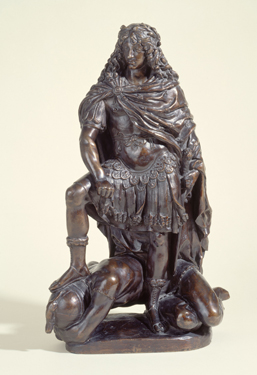
Gilles Guérin (1611-1678).
Louis XIV crushing the Fronde, model from a larger group commissioned in 1653 for the Court of the City of Paris.
Paris, musée Carnavalet. Inv. S 3420 -
The Iron Mask
5/8 This iron mask evokes the most enigmatic prisoner of the seventeenth century, imprisoned in the Citadel of Pinerolo along with Nicolas Fouquet to whom was appointed to serve as his valet. 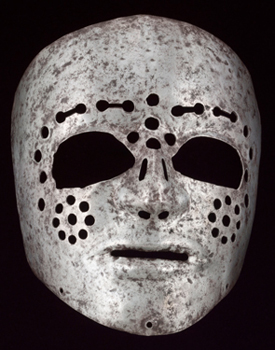
Mask of derision (?).
France (?), seventeenth century.
Paris, musée de l’Armée. Inv. G PO 1583 -
The Mazarinade-placard
6/8 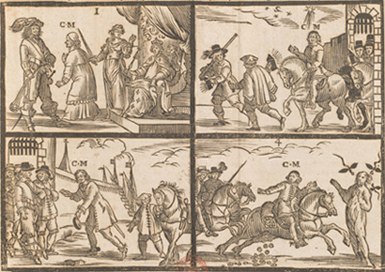
" Récit de ce qui c'est fait et passé à la marche mazarine depuis sa sortie de Paris jusques à Sedan" (A satirical account of what was done and what happened during the “March of [Cardinal] Mazarin”: that is since his fleeing Paris and reaching Sedan).
Mazarinade- placard, 1651.
Paris, Bibliothèque nationale de France Département des imprimés. RES- F-224 (fol 259). -
Relief map of Belle-Ile, the Citadel and Palais
7/8 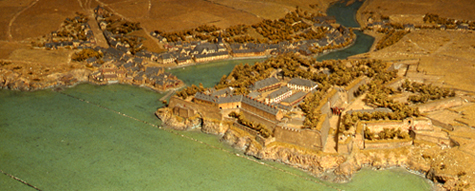
Antoine Tessier de Derville. Relief map of Belle-Ile, the Citadel and Palais (1704).
Paris, musée des Plans-Reliefs.In 1658, Nicolas Fouquet purchased Belle Isle to build a harbour, a warehouse and arm a dozen ships for trade. This relief map, very partial, does not show the East coast of the island and the village of Locmaria, near which rests Porthos, buried under the rocks... -
Portrait of Antonin Nompar Caumont Duke of Lauzun
8/8 Arrested in 1671, the Duke of Lauzun was escorted by D'Artagnan to the Fortress of Pinerolo, where he was kept prisoner for ten years, along with Fouquet and probably the Man in the Iron Mask. On this portrait he can be seen wearing the Order of Garter. King James II of England had bestowed on the Duke of Lauzun the Order because he had helped escort James' wife, Queen Mary Beatrice to Saint-Germain-en-Laye after his defeat in 1688. 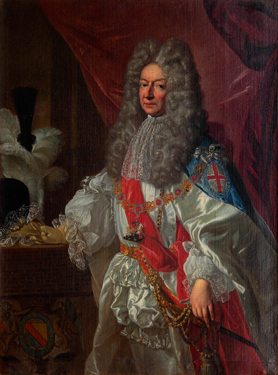
Alexis-Simon Belle (1674 – 1734). Portrait of Antonin Nompar Caumont, Duke of Lauzun.
Oil on canvas, c. 1700.
La Rochelle, musées d’art et d’histoire .




